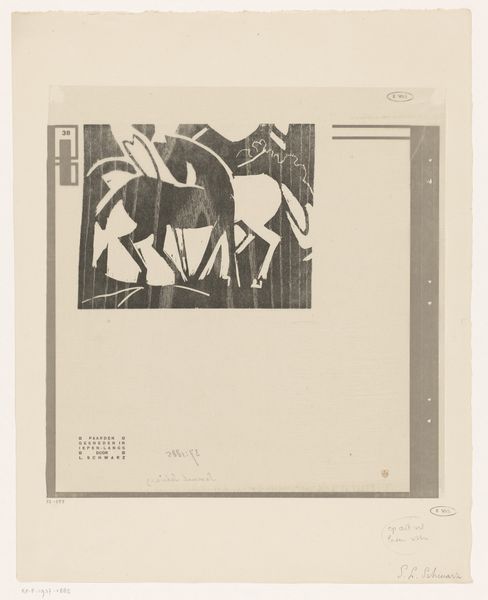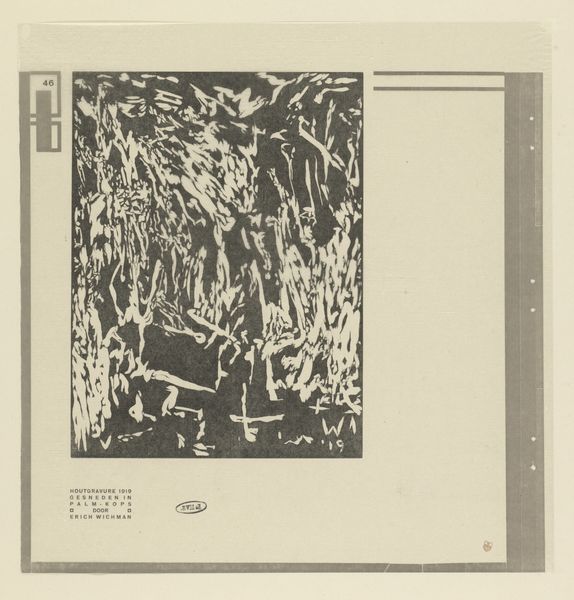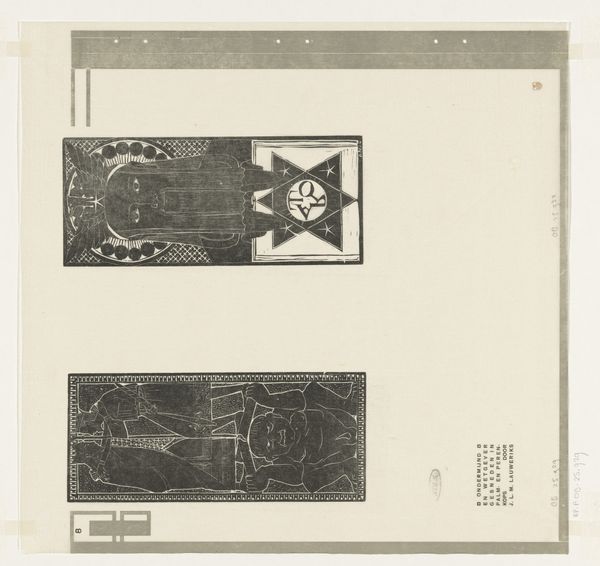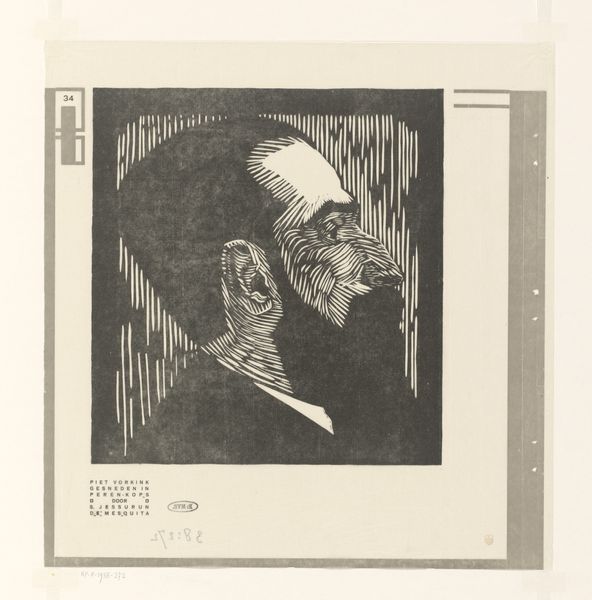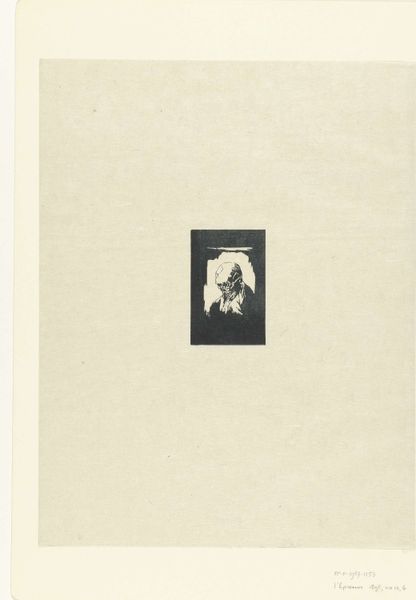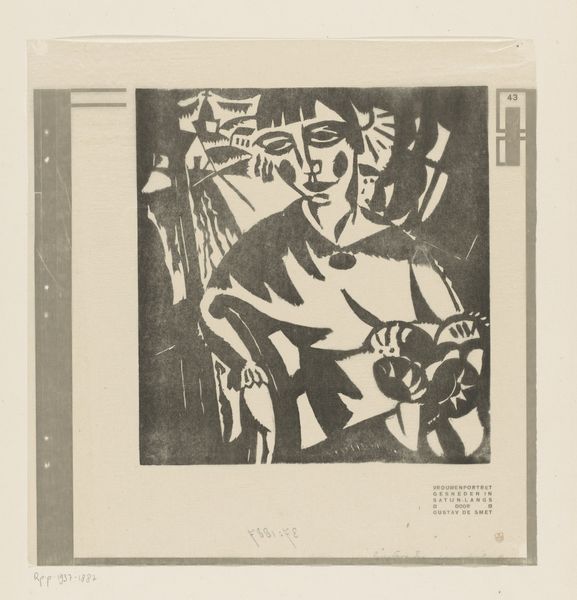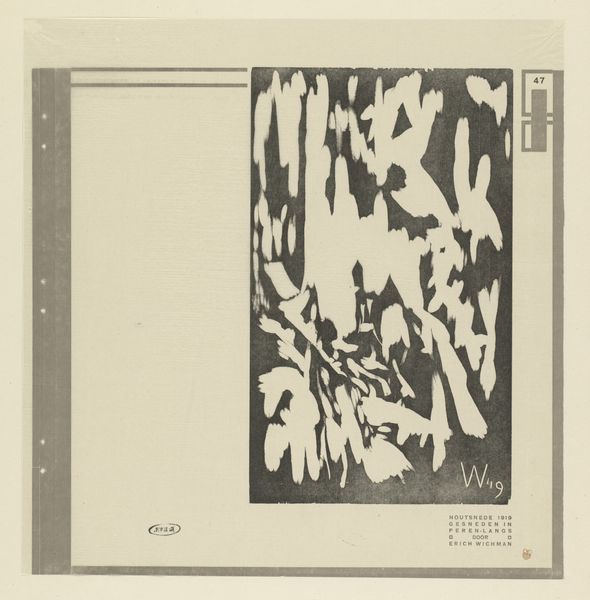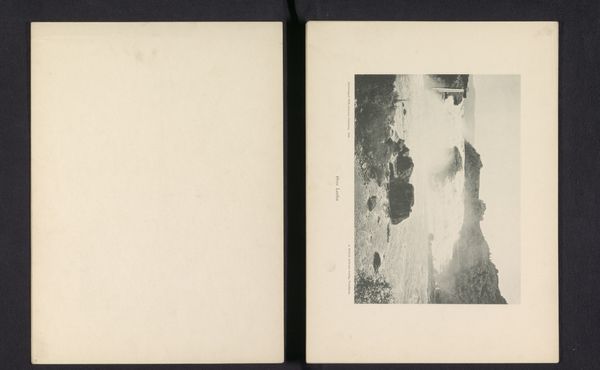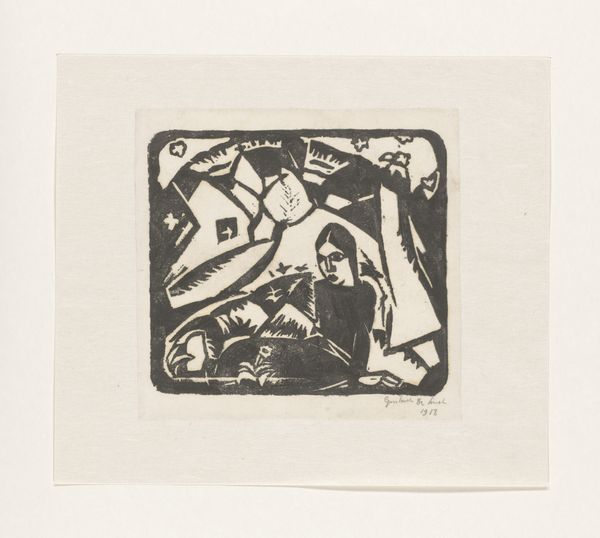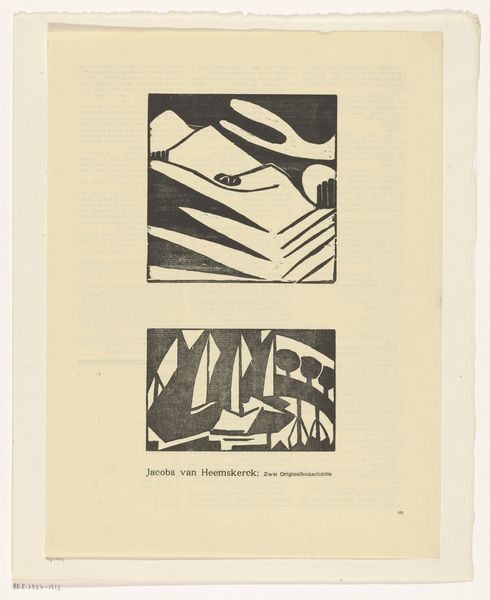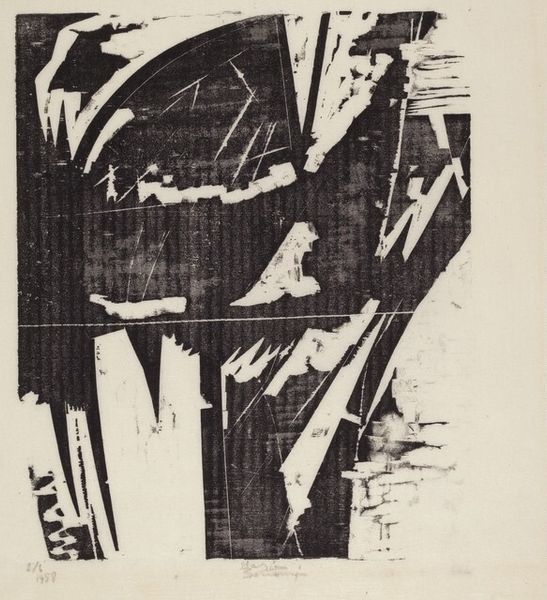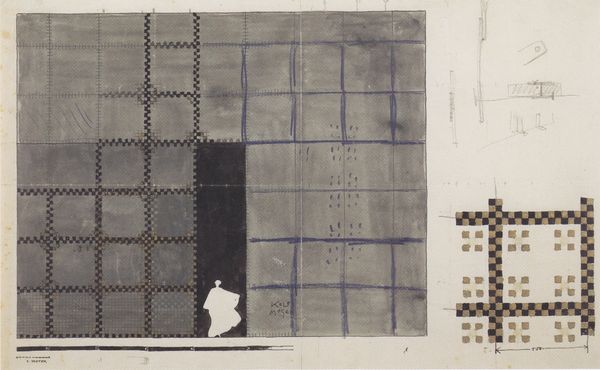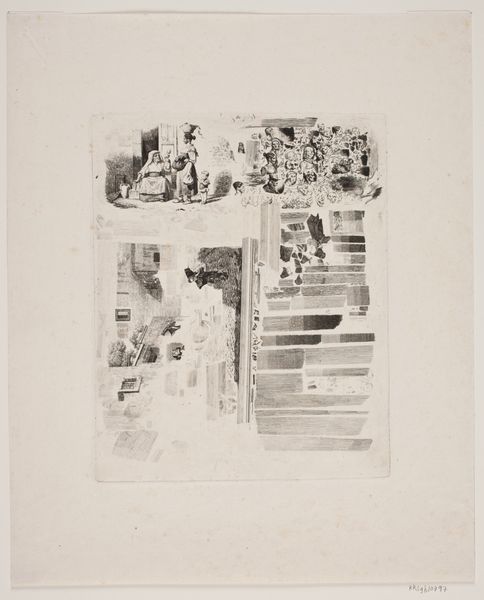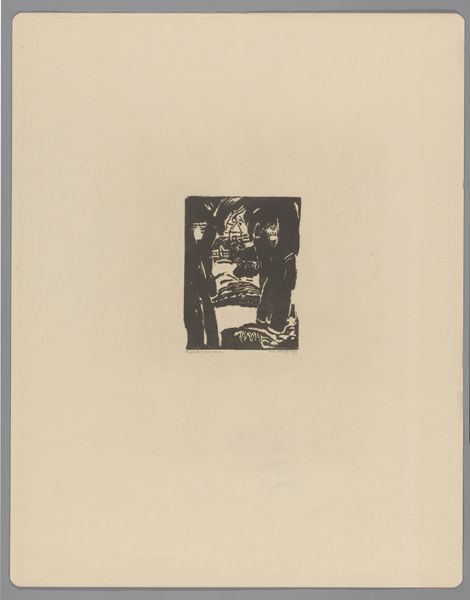
print, woodcut
# print
#
figuration
#
woodcut
#
line
#
symbolism
Dimensions: height 320 mm, width 310 mm
Copyright: Rijks Museum: Open Domain
Curator: Here we have "Drie theosofische voorstellingen", or "Three Theosophical Representations", a 1919 woodcut by Mathieu Lauweriks. What’s your initial reaction to these combined prints? Editor: Stark. The high contrast and sharp lines create an immediate feeling of tension. There’s a clear symbolic language at play, though I can't immediately decipher all of it. It almost feels like looking at religious icons or tarot cards—compressed narratives. Curator: Lauweriks was deeply involved in Theosophy, a spiritual movement that blended Eastern and Western philosophies, so your read is spot-on. Each image tackles theosophical concepts; you have a symbolic representation of a deity, a possible reference to Multatuli and humanist thought, plus the suffering figure on the bottom section. Lauweriks often incorporated geometric and abstract forms into his designs to represent the underlying spiritual order he perceived in the world. How do you think his historical and political environment is visible within his formal symbolic language here? Editor: Well, in the aftermath of World War One and during the rise of new political ideologies, the pursuit of spiritual and esoteric knowledge served as an alternative framework for societal organization and self-understanding. Lauweriks sought a holistic view of the human experience. This is evident in his use of figuration intertwined with occult themes. What I am curious about is the emphasis placed on both figuration, or what appear to be recognizable characters with intense human emotions like sorrow, versus the use of geometric patterns as their backdrop or the matrix within which these figures live. Is the juxtaposition intentional, highlighting tensions between the rational versus irrational or between lived human experience and philosophical ideals? Curator: That’s a great point. It speaks to the Theosophical aim to reconcile science, religion, and philosophy, so Lauweriks’ art mirrors that ambition. The use of black and white, the geometric patterns and even the organization of the prints point to his exploration of fundamental truths. I see this piece more like a symbolic manifesto that aimed to guide societal organization beyond the political or individual realms into something greater than both. Editor: So the historical tension between spiritual ideals and the harsh realities of post-war Europe seems resolved or, at least, synthesized within the framework of his design here? It makes you consider art's capacity to reshape worldviews within new ideological landscapes. Well, examining the social and political contexts definitely helps appreciate the philosophical density of the work. Thanks for sharing your insight. Curator: And thank you for pushing the conversation toward new perspectives, examining the symbolic languages between political and historical shifts and spiritual interpretation.
Comments
No comments
Be the first to comment and join the conversation on the ultimate creative platform.
